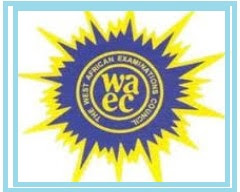WAEC 2018 Biology Questions and Answers: Objective & Theory – Related with these are; WAEC Biology past questions 2017. WAEC Biology past questions,2015, GCE past questions on English language, WAEC Biology question and answer 2018, marking scheme for WAEC physics practical, and area of concentration for WAEC 2018. These are essential to your making good grades in this 2018 May/June WAEC examinations to qualify you for university admission this year WAEC 2018 Biology Questions and Answers: Objective & Theory
In this post are verified regularly repeated Economics Objective and Essay questions and answers for 2018 May/June SSCE exam that holds on 16/4/2018. Get them in your finger tips and you are sure of a high grade in this exams. WAEC 2018 Biology Questions and Answers: Objective & Theory.
WAEC 2018 Biology Questions and Answers: Objective & Theory
Table of Contents
WAEC FOR ALL
The West African Examinations Council (WAEC) is the West African countries Examination Body. It conducts the West African Senior School Certificate Examination for in-house school students and General Certificate Examination for private candidates in West African Countries. These are entry qualification examinations for higher education institutions in these countries.
As you know, no University, Polytechnic, or college of education in these countries would admit you into any of their courses without a good grade in any of these examinations. That is why over three million candidates register and take these subject exams annually.
Consequently, WAEC 2018 Biology Questions and Answers: Objective & Theory, our goal here is to help you achieve this your life dream. Listed here are Economics, Objective and Essay questions and answers relevant to 16/4/2018 Economics Subject examination.
WAEC 2018 Biology Questions and Answers: Objective & Theory
EAXAM PROCEDURE
There are three papers here: Papers 1, 2 and 3, be taken. Papers 1 and 2 will be a composite paper to be taken at one sitting.
PAPER 1: Consists of fifty multiple – choice objective questions drawn from Section A of the syllabus (the section of the syllabus which is common to all countries). It will carry 50 marks and last for 50 minutes.
PAPER 2: Will consist of six essay questions drawn from the entire syllabus. The paper will be put into three sections, Sections A, B and C.
Section A: Will consist of four questions drawn from Section A of the syllabus.
Section B: Will be for candidates in Ghana only and will be drawn from Section B of the syllabus (i.e. the section of the syllabus peculiar to Ghana). It will consist of short -structured questions.
Section C: Will be for candidates in Nigeria, Sierra Leone, The Gambia and Liberia and will be drawn from Section C of the syllabus (i.e.) the section of the syllabus containing material for those countries only). It will also consist of short-structured questions.
Candidates will be expected to answer two questions from Section A and all the short -structured questions from either Section B or Section C.
Each question in Section A will carry 20 marks while the compulsory short – structured questions in Sections B and C will carry 30 marks. The total score will be 70 marks. The paper shall take 1 hour 40 minutes.
PAPER 3: Will be a practical test (for school candidates) or a test of practical work (for private candidates) lasting 2 hours and consisting of three sections: Sections A, B and C.
Section A: This will consist of two compulsory questions drawn from Section A of the syllabus, each carrying 25 marks.
Section B: This will be for candidates in Ghana only. It will consist of one question drawn from Section B of the syllabus and will carry 30 marks.
Section C: This will be for candidates in Nigeria, Sierra Leone, The Gam bia and Liberia. It will consist of one question drawn from Section C of the syllabus and will carry 30 marks.
Candidates will be expected to answer all the questions in Section A and one question in either Section B or C. The paper will carry a total score of 80 marks.
WAEC 2018 Biology Questions and Answers: Objective & Theory
OBJECTIVES
1. The cilia in paramecium are use for
A. respirating
B. locomotion
C. protection
D. regulating food intake
E. excretion
2.Euglena may be classified as a plant because it
A. has chloroplast
B. has a gullet
C. lives in a pond
D. possesses a flagellum
E. has pellicle
3.A trawler on a fishing trip caught a type of animal with hairs on its body. This animal could have been
A. An amphibian
B. a reptile
C. a shark
D. a mammal
E. a seagull
4.which of these type of skeleton is most appropriate for a cockroach?
A. Hydrostatic skeleton
B. Exoskeleton
C. Endoskeleton
D. Cartilaginous skeleton
E. Bony skeleton
4. when protein are broken down they also provide
A. oxygen
B. carbonhydrate
C. energy
D. amino-acid
E. carbon dioxide
Get Paid to Answer Simple Questions on Myschool – Start Now!
5. A plant which grows on another plant without apparent harm to the host plant is called
A. a parasite
B. an epiphyte
C. a saprophyte
D. a predator
E. a hermaphrodite
6. Given the equation:
6CO2 + 6H2O → C6H12O6 + 6O2 {Under sunlight & Chlorophyll)
The process represented by the above equation is
A. proteinsynthesis
B. respiration
C. photosynthesis
D. transpiration
E. translocation
7.Given the equation:
6CO2 + 6H2O → C6H12O6 + 6O2 {Under sunlight & Chlorophyll)
The oxygen given off during the above process is derived from
A. sunlight
B. chlorophyll
C. carbon dioxide
D. atmosphere
E. water
8. One of the function of xylem is
A. strengthening the stem
B. manufacturing food
C. reducing loss of water
D. conducting manufactured food
E. storing unused sugar
9. People suffering from myopia
A. can see near object clearly
B. can see far away object clearly
C. cannot see any object clearly
D. are colour blind
E. are able to see clearly in the dark
10. the function of lenticels is
A. to remove excess water in plant
B. to absorb water from the atmosphere
C. for gaseous exchange
D. to absorb light
E. to store food
11.The following events take place during conjugation in spirogyra 1. The protoplasm of each of the conjugating cell separate from the cell wall to form a Gamete; the gamete of one filament passes through the conjugation tube to meet the gamete of the other filament 2. The zygote soon become surrounded by thick brown wall to become zygospore which burst after a short rest and germinate to produce a new filament 3. The nuclei of the gametes fuse to form a zygote 4. The protuberance meet and where they touch the cell-wall disappear so that a conjugation tube joining the two cell is formed 5. protuberance appear on the wall of the cell of two filament of spirogyra lying side by side opposite one another. Now what is the correct sequence in which the above sequence occur?
A. 1,2,3,4,5
B. 1,2,4,5,3
C. 3,4,5,2,1
D. 5,4,1,3,2
E. 5,4,3,1,2
12.Which of the following is a characteristic of animal cell?
A. Presence of chloroplast
B. possession of cellulose cell-wall
C. absence of large vacuoles
D. presence of large vacuoles
E. presence of chromosome
13. Nitrifying bacteria keep the soil fertile by
A. converting nitrate to nitrogen
B. converting ammonium salt to nitrate
C. converting atmospheric nitrogen to plant nitrogen
D. converting nitrate to nitrous oxide
E. converting atmospheric nitrogen to nitrates
14. In the life histroy of schistosoma (Bilharzia), one of the following is intermediate host
A. man
B. snail
C. mosquito larva
D. crayfish
E. fish
15. The organelle in eukaryotic cells which is involved in the intracellular digestion of food is
A.Golgi body.
B.lysosome.
C.mitochondrion.
D.ribosome.
16. Which of the following structures is common to Amoeba, Paramecium and Euglena?
A. Anal pore
B. Contractile vacuole
C. Flagellum
D. Oral groove
17. The tertiary consumer within the web is
A. grasshopper.
B. rabbit.
C. man.
D. lion.
18. A company was prohibited from producing bags made from leopard skin as a measure of
conserving
A.water.
B.forest.
C.wildlife.
D.land.
19. An allele constantly expressed in the appearance of an organism is said to be
A. recessive.
B. dominant.
C. hybrid.
D. sex linked.

WAEC 2018 Biology Questions and Answers: Objective & Theory
PAPER 2 (ESSAY)
1. a) Name two types of aquatic habitats. For each habitat you named in (a) above, state
i. two plants;
ii.two animals, found in the habitat.
b) Explain briefly the following terms:
i. Allele;
ii.Phenotype.
c) State the feeding habit of the following organisms and two modifications each that help them adapt to it.
i. Mosquito larva;
ii.Tapeworm.
d) Explain how sewage causes water pollution
e) List two processes that release carbon to the environment
WAEC 2018 Biology Questions and Answers: Objective & Theory
More Requirements
If you desire further assistance, or have questions to ask, send them through the comment box on this page. Remember to share this through our social media share buttons below this page.
If you click to follow us on our Facebook handles you will ensure a regular update on matters that affect your performance on this.
Good luck.

Deacon Anekperechi Nworgu, a seasoned economist who transitioned into a chartered accountant, auditor, tax practitioner, and business consultant, brings with him a wealth of industry expertise spanning over 37 years.


